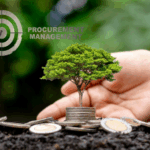Aligning with Global ESG Standards: CSRD, GRI, and IFRS Essentials
Aligning with global ESG standards is more than a regulatory requirement—it’s a business necessity. As sustainability continues to shape corporate strategies, organizations must adopt frameworks that provide credibility, transparency, and measurable impact.
Having worked directly with businesses undergoing ESG transformation, I’ve seen firsthand how early alignment with global ESG standards doesn’t just meet compliance—it creates a competitive edge in resilience, investor confidence, and stakeholder trust
Why Aligning with Global ESG Standards Matters
The shift toward sustainable business practices is driven by a powerful triad: regulatory mandates, investor expectations, and societal pressures. Aligning with global ESG standards like the Corporate Sustainability Reporting Directive (CSRD), Global Reporting Initiative (GRI), and IFRS S1 & S2 ensures companies can meet these demands with confidence and strategic foresight.
1. CSRD and ESRS: The EU’s Regulatory Backbone
The Corporate Sustainability Reporting Directive (CSRD) and the associated European Sustainability Reporting Standards (ESRS) set rigorous disclosure requirements for companies operating within or connected to the EU.
At the heart of CSRD is the double materiality principle—assessing how sustainability issues affect a company and how the company impacts people and the planet. This dual lens enhances corporate accountability and gives stakeholders a comprehensive view of environmental and social performance.
2. GRI: A Global Benchmark for Sustainability Transparency
The Global Reporting Initiative (GRI) remains the most widely adopted ESG reporting framework across industries and regions. Its stakeholder-focused model requires organizations to disclose information most relevant to their societal and environmental impact.
Companies using GRI show commitment to:
- Transparency and accountability
- Sustainable development
- Ethical stakeholder engagement
3. IFRS S1 & S2: Integrating ESG into Financial Disclosure
Developed by the International Sustainability Standards Board (ISSB), IFRS S1 and S2 bring ESG into the core of financial disclosure. These standards emphasize enterprise value, connecting ESG risks directly to financial performance and investor decision-making.
- IFRS S1 covers general sustainability disclosures
- IFRS S2 focuses on climate-related risks and opportunities, building on the TCFD framework
This alignment gives investors clear, comparable, and consistent data—a growing demand in capital markets.
Key Benefits of ESG Framework Alignment
- Regulatory compliance (CSRD, EU Taxonomy, SEC climate rules)
- Investor trust and access to sustainable finance
- Risk resilience and long-term value creation
- Enhanced brand reputation and stakeholder goodwill
Final Thoughts
Aligning with global ESG standards is no longer optional—it’s a strategic imperative. Organizations that adopt these frameworks early build trust, mitigate risks, and unlock value in a fast-changing regulatory and societal landscape.
As sustainability becomes a boardroom priority, professionals must remain agile, well-informed, and transparent in reporting. The CSRD, GRI, and IFRS S1/S2 frameworks aren’t just tools for compliance—they’re pathways to sustainable growth.









